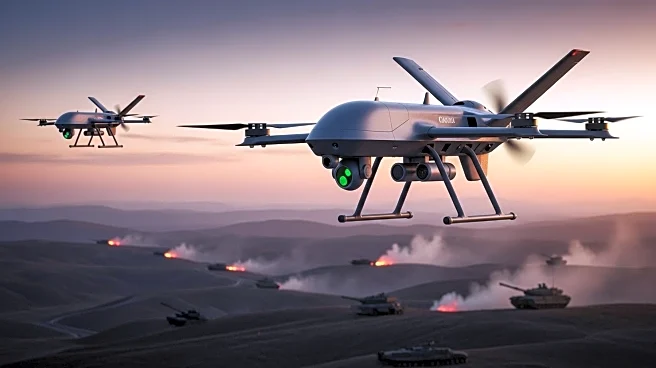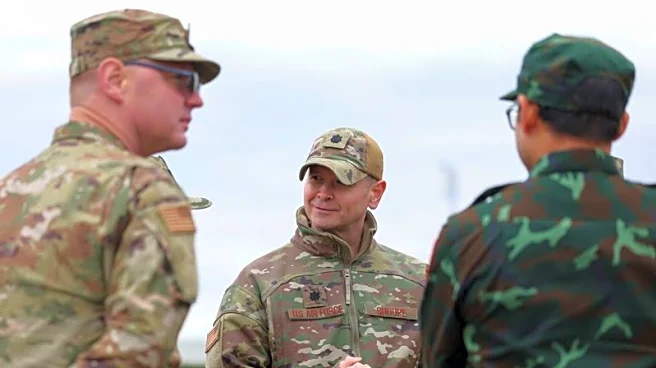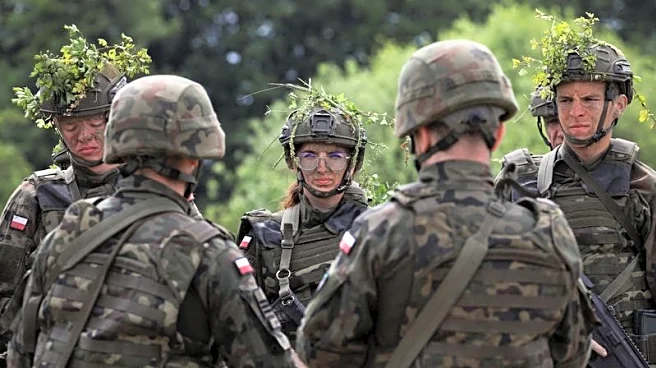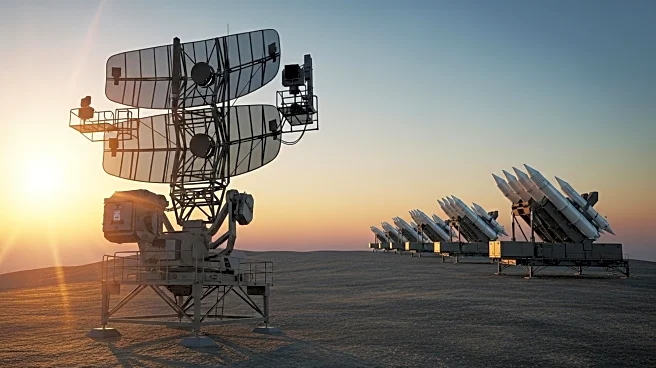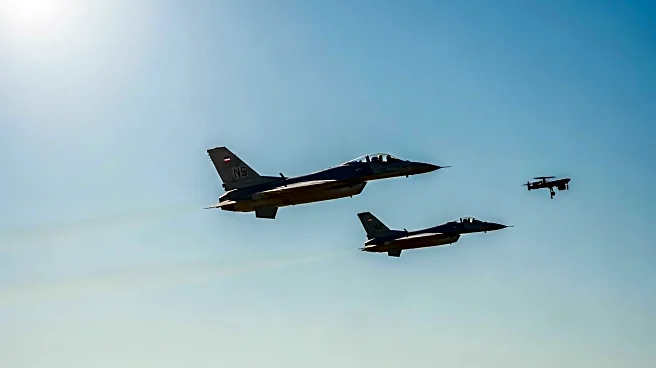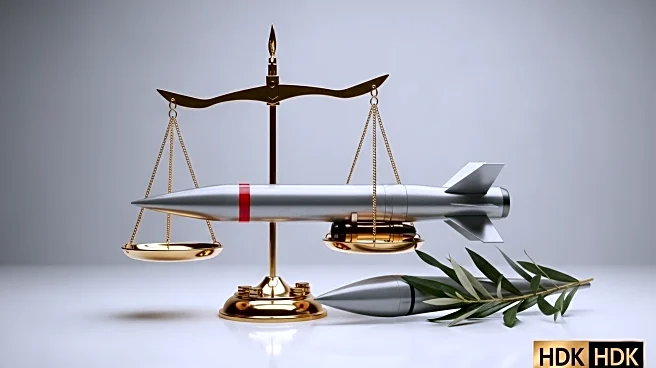What's Happening?
The United States, along with NATO allies Turkey and Hungary, observed the Zapad-2025 military exercises conducted by Russia and Belarus. These drills took place near the borders of Ukraine and in the Baltic and Barents Seas, showcasing modern combat tactics and nuclear capabilities. The exercises come amid heightened tensions in Europe, with Russian drones recently entering Polish airspace, prompting NATO jets to respond. Belarus released 52 political prisoners following a meeting between a Trump administration official and Belarusian leader Alexander Lukashenko, leading to eased sanctions on Belarus's state-run airline, Belavia.
Why It's Important?
The military exercises underscore the strategic alliance between Russia and Belarus, posing a challenge to NATO's security in Eastern Europe. The presence of US military observers indicates a shift in US-Belarus relations, potentially easing tensions following previous sanctions. The drills highlight Russia's military capabilities, including the deployment of tactical nuclear weapons in Belarus, raising concerns among European leaders about regional security. The release of political prisoners and subsequent easing of sanctions may signal a thaw in US-Belarus relations, impacting diplomatic dynamics in the region.
What's Next?
The continuation of military exercises and the presence of tactical nuclear weapons in Belarus may prompt further diplomatic discussions among NATO members regarding regional security strategies. The US may consider additional diplomatic engagements with Belarus to address mutual concerns and explore opportunities for cooperation. European leaders may push for stronger responses to Russian military activities, while Belarus's role as a strategic ally to Russia could influence future geopolitical developments in Eastern Europe.
